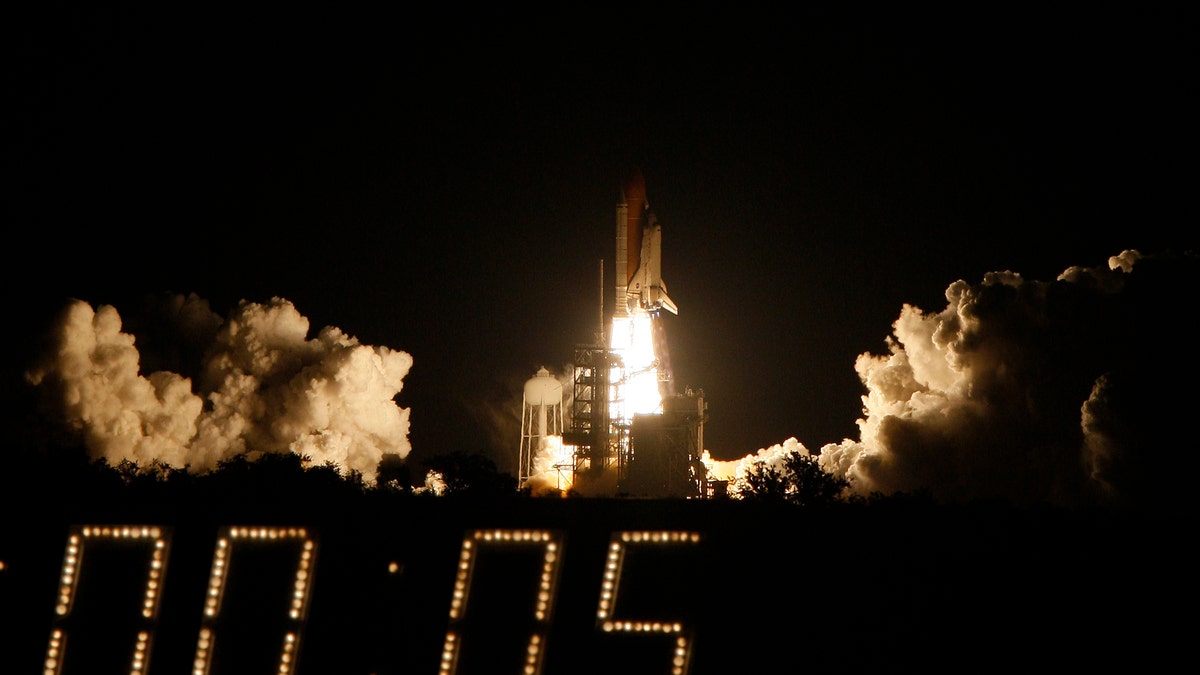
Space Shuttle Discovery lifts off at the Kennedy Space Center in Cape Canaveral, Fla. April 5, 2010. (AP Photo/Wilfredo Lee)
NASA could lose its lead in the space race to China or Russia if it doesn’t revitalize its workforce, a new study has found.
“In the longer term (two to three decades from now), China appears to be best positioned to be a challenger for the top spot,” Prof. Loizos Heracleous of Warwick Business School in the U.K. told FoxNews.com. He and Steven Gonzalez of NASA’s Johnson Space Center co-authored the study, Two modest proposals for propelling NASA forward, which was published on Nov. 17 in Space Policy.
“This is due to the amount of resources [China] dedicates to space activities, the breadth of its programs, its long-term thinking and its determination,” Heracleous continued.
He noted that other countries, too, are getting in on the space game — nations like India, which recently launched an orbiter to Mars at the “incredibly low cost” of $74 million, though its program “lacks the scope of the U.S., Russian or Chinese programs.”
But those countries’ space programs are gaining momentum and closing ground, he said.
Heracleous and Gonzalez have written in their study that NASA can overcome its predicament by addressing two issues — its lack of employee turnover and its budgetary problems.
- In the 1960s, NASA’s annual turnover rate was 10 to 15 percent, ensuring a continuous influx of fresh talent and ideas. Today it’s 1.7 percent (excluding retirees), with 58 percent of its workers between the ages of 45 and 59. Using a successful government program, Sandia’s Entrepreneurial Separation to Transfer Technology (ESTT), as a model, the authors propose that employees be allowed to leave NASA to start new companies or help existing organizations, with guaranteed reinstatement if they decide to return. This would give scientists an opportunity to gain new insights and perspectives on their technology before returning to NASA.
- During the Cold War, NASA received 4.5 percent of the federal budget; today it’s down to 0.5 percent. The authors say this can be addressed by making NASA a network organization that is properly integrated internally and externally, meaning there is an organized working partnership not only between NASA centers but also with other superior space technology organizations.
“It would be beneficial if NASA could be given the freedom to manage its human resources and infrastructure based on performance-based, market-oriented, competitive principles,” Heracleous said. “Such a move would have positive consequences organizationally and strategically, including the ability to revitalize its workforce and facilitate transfer of relevant competencies from wherever they reside.”
Heracleous blames lack of support and funding for NASA’s struggles. “NASA has not been resting on its laurels,” he said. “However, it has been constrained by several factors, including a misalignment between long-term project timescales on one hand, and uncertainty in terms of political support, funding cycles and leadership stability on the other hand.”
Time will tell if NASA takes the authors’ proposal into consideration and implements its methods.
“No doubt there are additional dimensions than the obvious scientific ones to take into consideration, such as socioeconomic as well as military ones,” Heracleous said.
But with the space race heating up, time is running out.
“China, for example, has been explicit about wishing to mine precious minerals on other planets and asteroids,” Heracleous said.
